Morio Nishimura, KalpaJune 4 - July 16, 2005 taguchi fine art, ltd. |
|
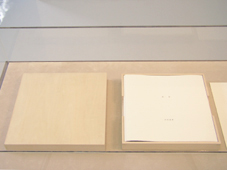
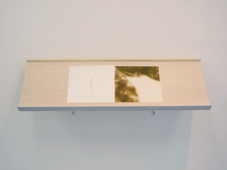
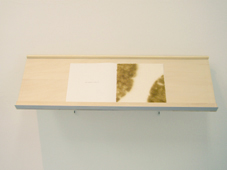
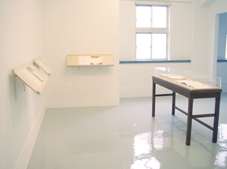
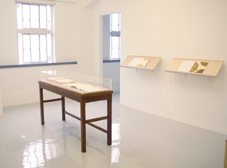
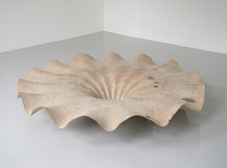
|
Born in Tokyo in 1960, Morio Nishimura now resides in Meerbusch, Germany. After having graduated from Tama Art University in 1985, he moved to Germay as DAAD student in 1991. Got the Meisterschueler from Gueter Ucker at the Art Academy in Dueseldorf in 1995. Under the Japanese government overseas study program for artists, he studied on religion and contemporary art at the department of culture and spiritual history at the art academy in Johannes Gutenberg-University, Mainz from 1998 to 1999 and stayed there as a lecturer for two and half years. In 2001, received the title of "the artist of Kunst-Station Sankt Peter, Koeln 2001-02" . sweet rainNishimura investigates into the relation between human being and the world through taking various religious activities around the world as the motif of his works.On the occasion of his installation at tagauchi fine art, ltd. in 2002, titled "suesser Regen (sweet rain)", he exhibited wooden sculptures of which motif is lotus leaves. The motif, "lotus" is very important plant for Buddhism as the symbol of "Rin-ne (emancipation from worldly attachments)" or "Gedatsu (transmigration of the soul)". And it is also the sitting place of Buddha. The title, "sweet rain" is the rain which Ryu-oh (king of dragon) let fall down to the earth to celebrate the birth of Buddha, giving baby Buddha first bath. Living in Germany, always confronting with his own identity as a foreigner from the far east, Nishimura clearly reaffirmed own interest in Buddhism which is already a part of him. Therefore it is quite understandable that works which deals the idea and objects related to Buddhism are getting more and more important in his recent activities. yellow sandAt the last installation at taguchi fine art, ltd. in 2004, Nishimura produced glass sculptures with a technique called "pate de verre (glass paste)", which has its origin in ancient Mesopotamia. The technique is, making a mold from original form made of clay, wax or wood and fill it with glass powder and then melt the glass in an oven. With this, Nishimura made glass sculptures, of which motif is a container of Buddha's ashes and cinerary urn.Nishimura says that container gives him an image of connection of inside with outside or this world with the other world. Before being put the lid, the inside of container stays as a clear space, exposed to light. However, the moment covered with the lid, the space inside is suddenly cut off from this world, unknown another world being created. Thus container can be regarded as a symbol of something which easily connects and separates two different worlds. And inside of cinerary urn is actually the other world in which we physically live after our death, leaving from this world. He titled these works "gelber Sand" - yellow sand flying from desert, which symbolize the spread of Buddhism and culture. kalpaOn this occasion, in cooperation with the artist, taguchi fine art, ltd. publishes a portfolio titled "Kalpa", containing 5 paper works - actual lotus leaves inside the Japanese paper, with texts excerpted from Bible or Buddhist scriptures.All texts are printed in letterpress at the Kazui Press, Ltd., and the wooden box is produced by Top Art Kamakura. Edition is limited to 5 copies plus 2 Artist Proof. Every work on paper is original thus unique. The title "Kalpa - Okkou in Japanese", from words by famous Buddhist priest Shuhomyocho, means eternity. Nishimura's activity is gradually noticed in Japan, joined the special group exhibition at Kanagawa prefectural hall gallery in October last year and this year the Museum of Modern Art, Kamakura has his show from June 11 through September 4th. checklist of the installation 1. Kalpa, 2005 portfolio containing 5 original paper works with lotus leaves edition limited to 5 copies + 2 A.P. box size: 24.0 x 24.0 x 3.0 cm 2. suesser Regen (sweet rain) Mana-11, 2004 wood 26 x 135 x 135 cm |